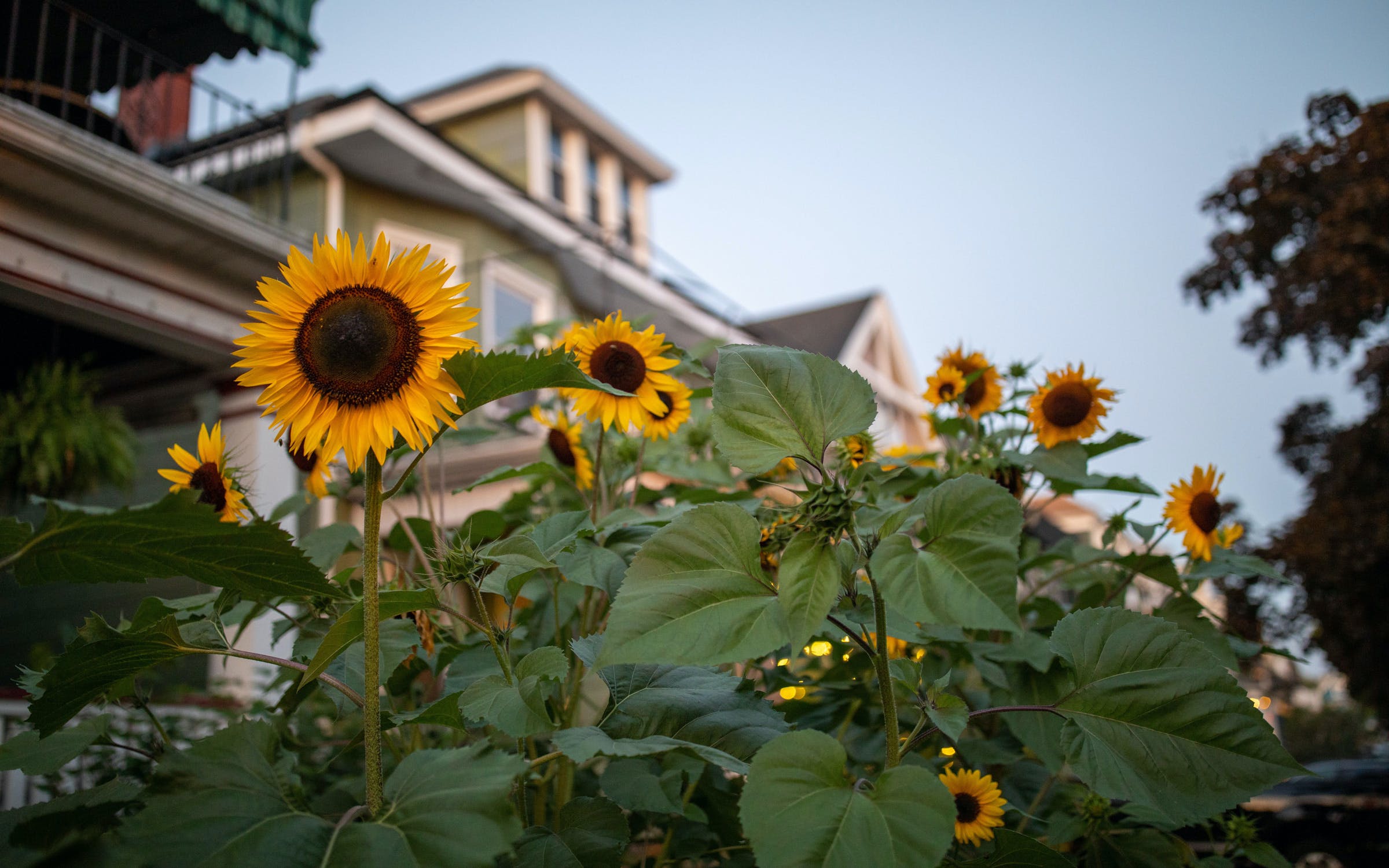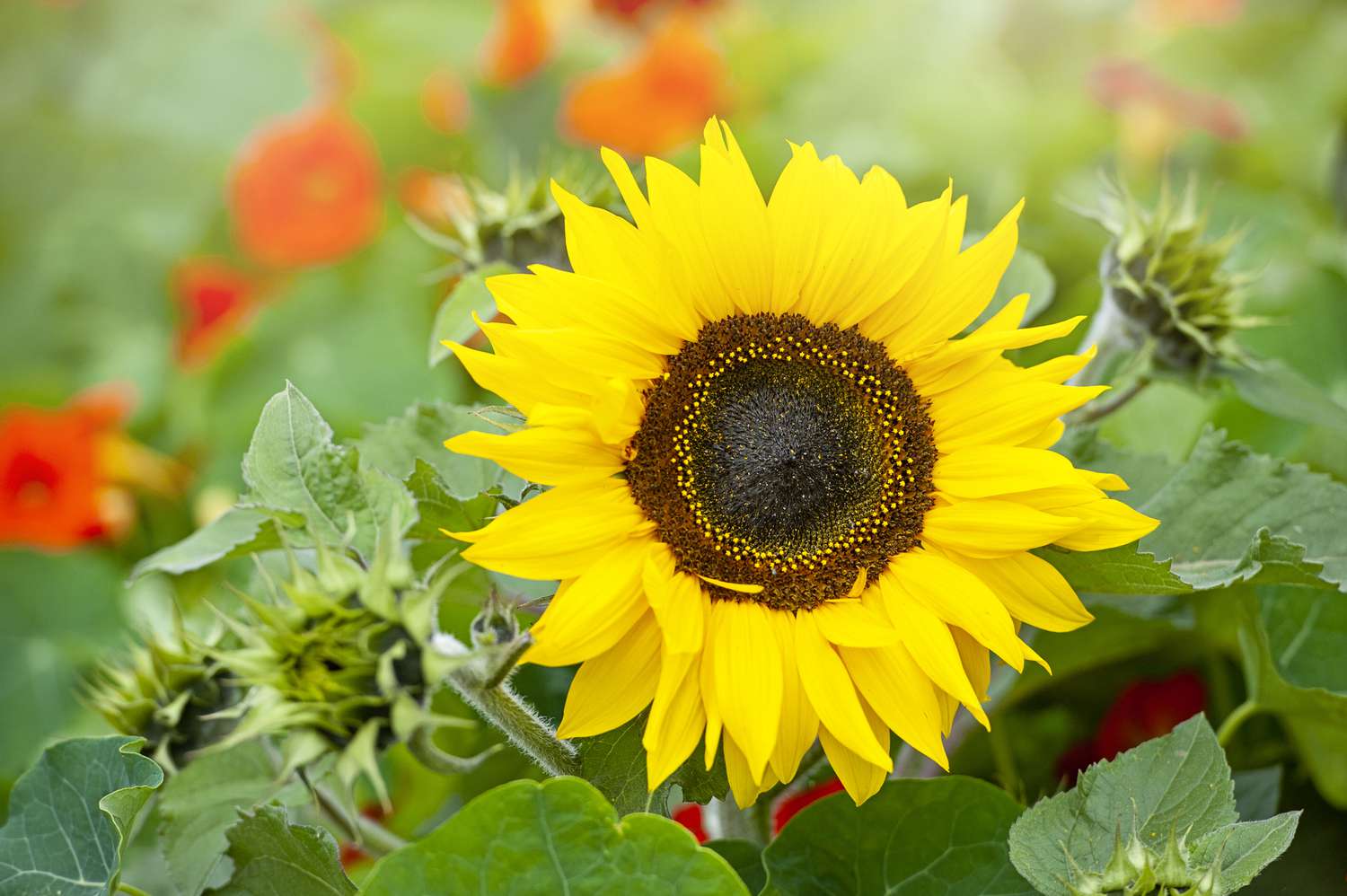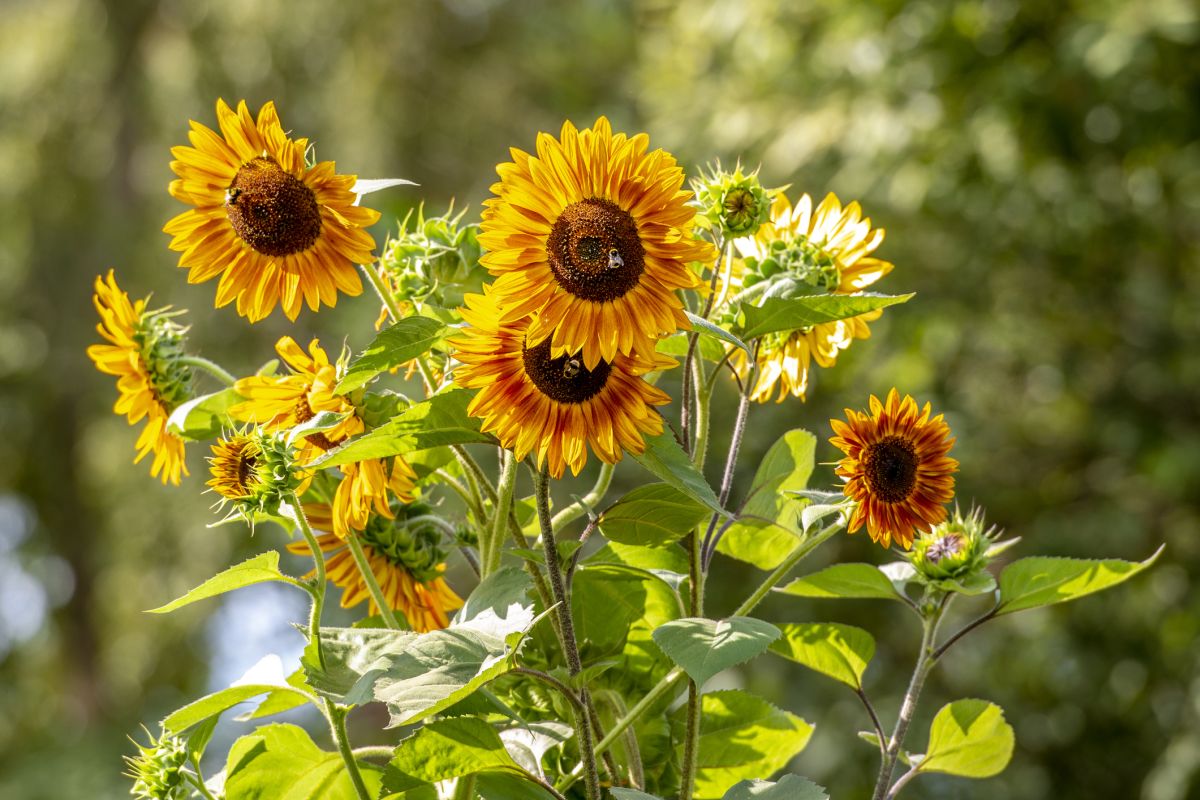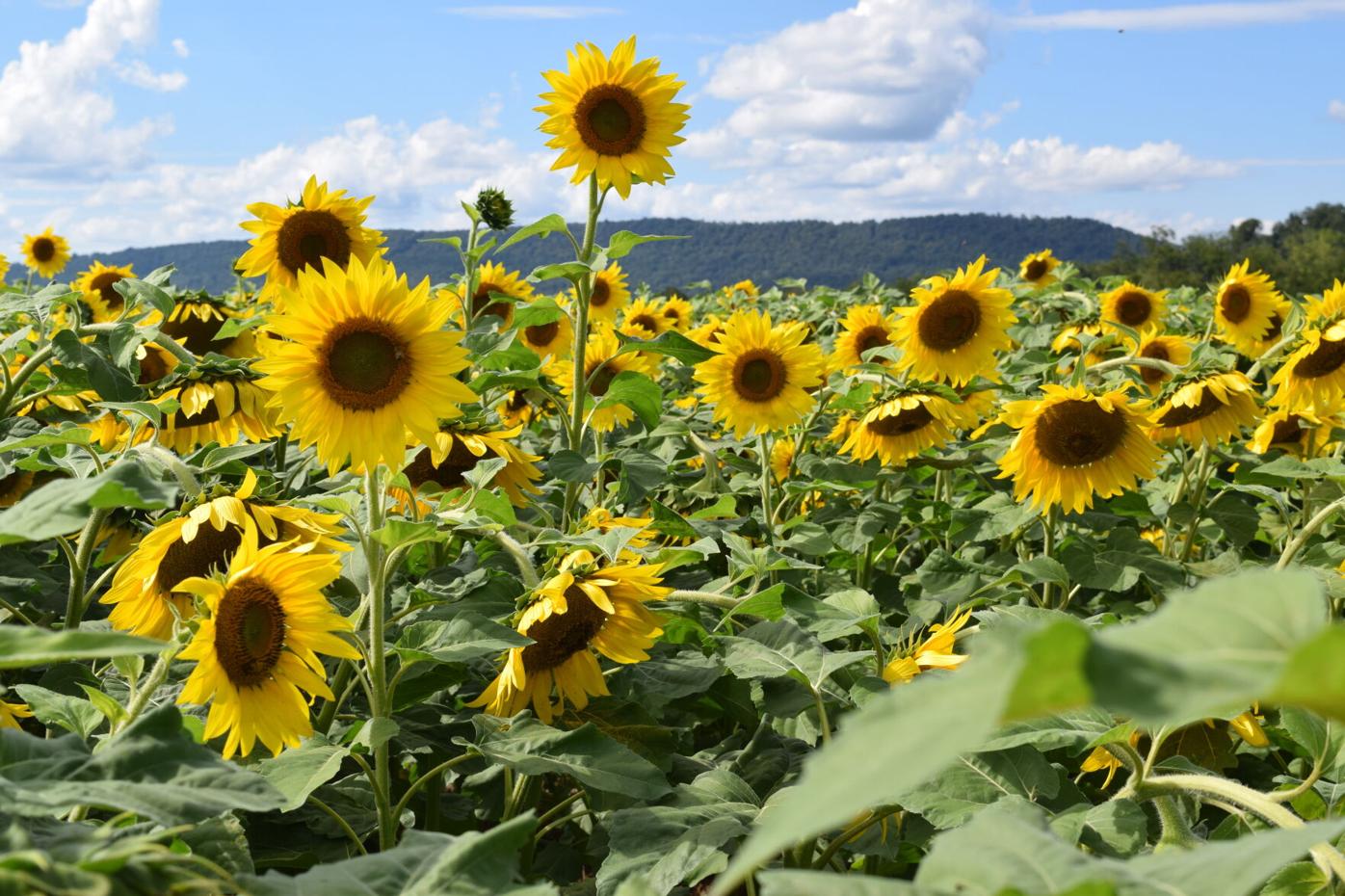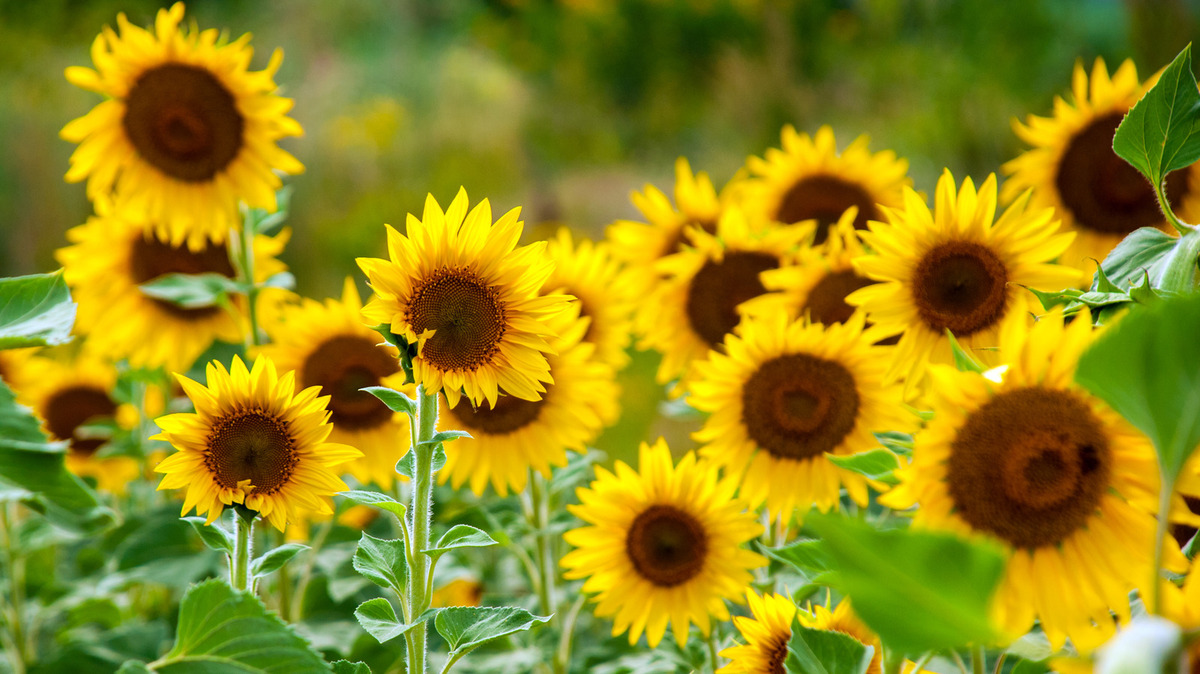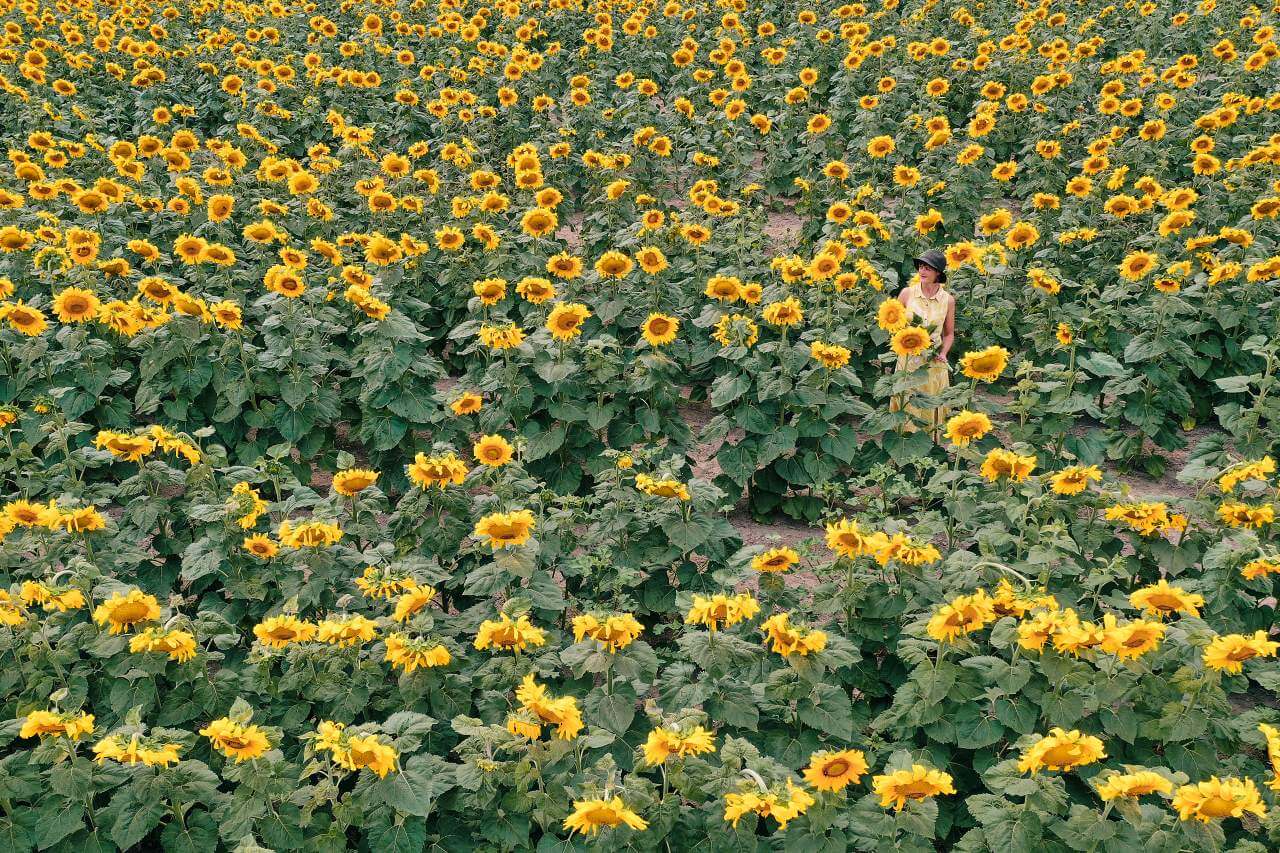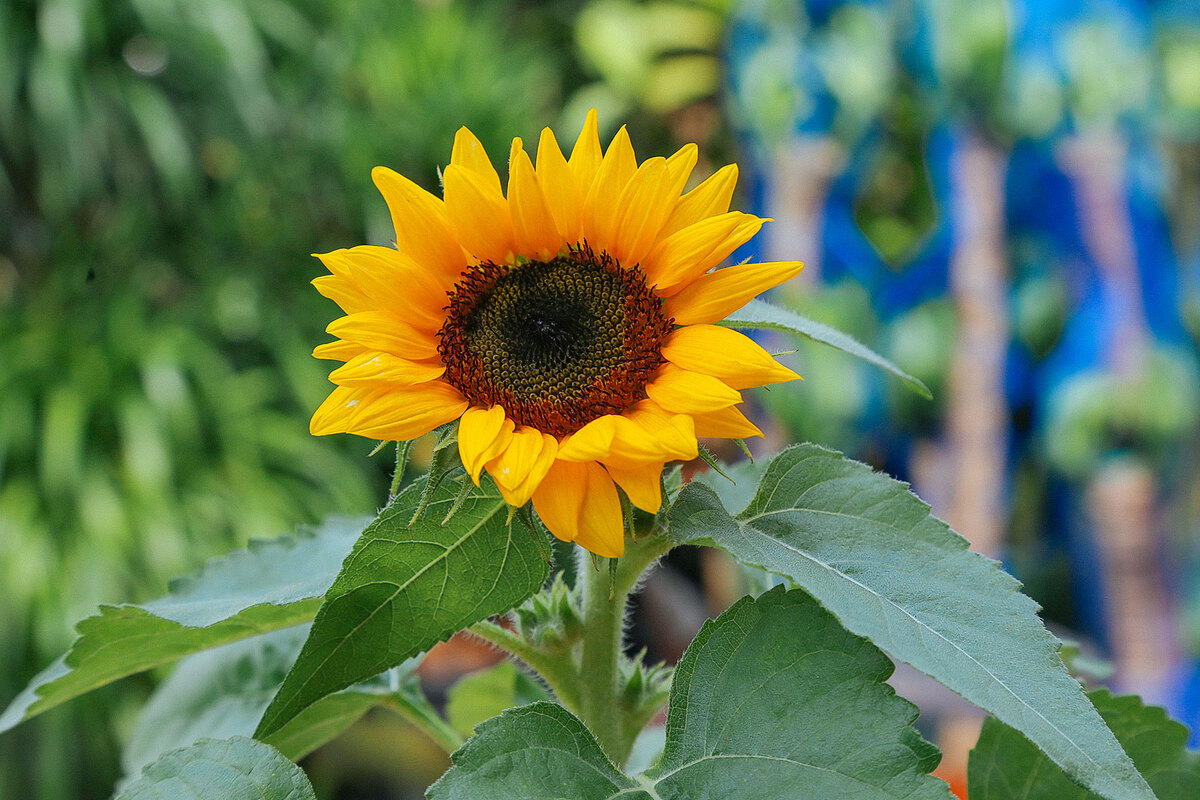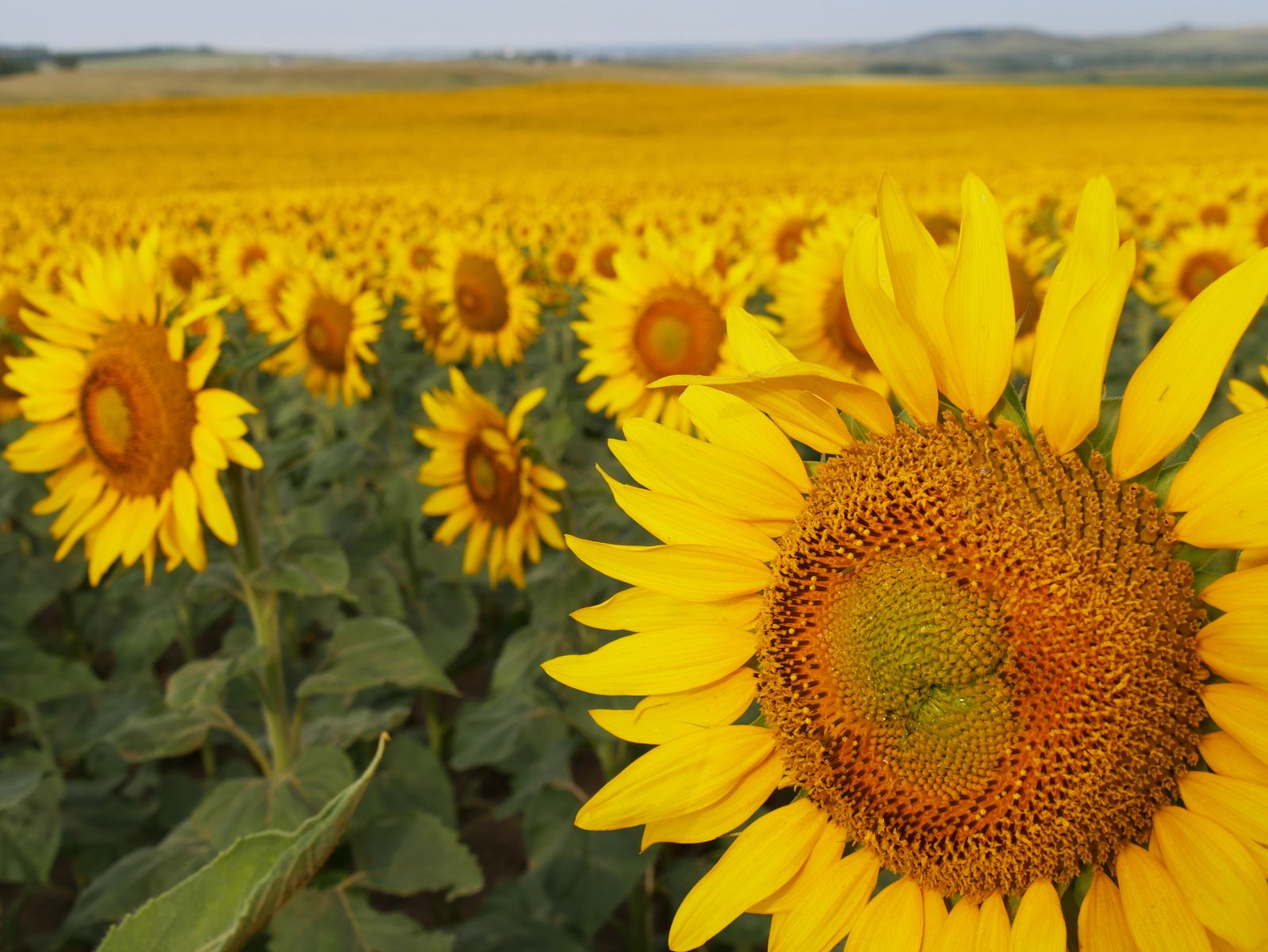Home>Types of Gardening>Ornamental Gardening>When To Plant Sunflowers In North Carolina


Ornamental Gardening
When To Plant Sunflowers In North Carolina
Modified: January 22, 2024
Discover the ideal time to plant sunflowers in North Carolina and enhance your ornamental gardening experience with these expert tips.
(Many of the links in this article redirect to a specific reviewed product. Your purchase of these products through affiliate links helps to generate commission for Chicagolandgardening.com, at no extra cost. Learn more)
Table of Contents
- Introduction
- Climate and Growing Conditions in North Carolina
- Sunflower Varieties for North Carolina
- Soil Preparation for Sunflowers
- Planting Sunflowers in North Carolina
- Choosing the Right Time to Plant Sunflowers
- Steps for Planting Sunflowers
- Caring for Sunflowers in North Carolina
- Common Pests and Diseases for Sunflowers in North Carolina
- Harvesting Sunflowers in North Carolina
- Conclusion
Introduction
Welcome to the world of ornamental gardening! If you’re a gardening enthusiast in North Carolina, you’re in for a treat. North Carolina offers a diverse climate that is perfect for a wide variety of plants, including beautiful sunflowers. These vibrant and cheerful flowers can bring a burst of color to your garden and uplift your spirits.
Sunflowers, known for their large yellow blooms and towering height, are a popular choice among gardeners. They not only add beauty to your garden but also attract beneficial insects and birds, making them a wonderful addition to any landscape.
In this article, we will guide you on when and how to plant sunflowers in North Carolina. We will provide insight into the climate and growing conditions in the region, discuss the best sunflower varieties for North Carolina, and give you step-by-step instructions on how to prepare your soil and plant sunflowers. We will also cover essential care tips, common pests and diseases to watch out for, and the proper time to harvest your sunflowers for optimal enjoyment.
Whether you’re a novice gardener looking to start your first garden or an experienced green thumb seeking to expand your floral repertoire, this article is for you. By the end, you’ll have all the knowledge you need to successfully grow stunning sunflowers in your North Carolina garden.
Climate and Growing Conditions in North Carolina
North Carolina experiences a diverse climate, which can vary depending on the region. However, the state generally falls under a humid subtropical climate zone. This means that summers are hot and humid, while winters are mild to cool. Understanding the climate and growing conditions in North Carolina is crucial for successful sunflower cultivation.
Temperature is an important factor to consider. Sunflowers thrive in temperatures between 70°F and 78°F (21°C to 26°C). They are heat-tolerant plants, but extreme heat above 90°F (32°C) can stress them. In North Carolina, sunflower planting is typically done in late spring to early summer when the temperatures start to rise. This allows the plants to establish themselves before the intense heat of summer hits.
Rainfall is also significant for sunflower growth. Adequate moisture is crucial during the early stages, but sunflowers are moderately drought-tolerant once established. North Carolina receives an average annual rainfall of around 45 to 55 inches (114 to 140 cm). However, it’s important to note that rainfall patterns can vary throughout the state. If there is insufficient rainfall, supplementary watering may be required to ensure the sunflowers’ health and vitality.
Sunflowers require a minimum of 6 to 8 hours of direct sunlight per day. They are sun-loving plants and thrive in bright, sunny conditions. Lack of sunlight can result in leggy growth and smaller flower heads. Make sure to choose a location in your garden that receives ample sunlight throughout the day.
The soil composition is another factor to consider. Sunflowers prefer well-draining soil with a pH level ranging from 6.0 to 7.5. They can tolerate a wide range of soil types, including sandy, loamy, and clay soils. It’s essential to ensure the soil is fertile and rich in organic matter to provide the necessary nutrients for healthy plant growth.
By understanding the climate and growing conditions in North Carolina, you can create an ideal environment for your sunflowers to thrive. With proper preparation and care, you’ll be rewarded with a stunning display of these vibrant flowers in your garden.
Sunflower Varieties for North Carolina
When it comes to sunflower varieties, North Carolina gardeners have plenty of options to choose from. Each variety offers its own unique characteristics and can add a touch of diversity to your garden. Here are some sunflower varieties that are well-suited for North Carolina:
- Mammoth Russian: As the name suggests, this variety produces massive flower heads that can grow up to 12 inches (30 cm) in diameter. Mammoth Russian sunflowers are known for their towering height, reaching up to 10 feet (3 meters) tall. They are a popular choice for creating a stunning focal point in the garden.
- Autumn Beauty: If you prefer a variety that offers a range of colorful blooms, Autumn Beauty is an excellent choice. These sunflowers produce flowers in shades of gold, yellow, orange, and burgundy, creating a vibrant and eye-catching display. With multiple flowers on each stem, they can create a stunning bouquet-like effect.
- Sunspot: Sunspot sunflowers are a dwarf variety, perfect for smaller gardens or container planting. They typically reach a height of 2 to 3 feet (60 to 90 cm) and produce charming 4 to 6-inch (10 to 15 cm) flower heads. Sunspot sunflowers are known for their sturdy stems and bright yellow blooms.
- Teddy Bear: This unique sunflower variety is aptly named for its fluffy, dense, and fully double flower heads. Teddy Bear sunflowers add a touch of whimsy and charm to any garden. They typically grow to a height of 3 to 4 feet (90 to 120 cm) and are a favorite among children and flower enthusiasts alike.
- Italian White: For those looking for something different, Italian White sunflowers are a stunning choice. With elegant white petals and dark centers, these sunflowers create a striking contrast in the garden. They typically grow to a height of 4 to 6 feet (120 to 180 cm) and add a touch of elegance to any landscape.
These are just a few examples of the sunflower varieties that thrive in North Carolina’s climate. When choosing sunflower varieties, consider factors such as size, color, and desired height. Whether you prefer the classic yellow sunflowers or want to experiment with unique colors and shapes, there’s a sunflower variety out there that will suit your preferences and make your garden shine.
Soil Preparation for Sunflowers
Before planting sunflowers in North Carolina, it’s important to prepare the soil to provide the best growing conditions for these vibrant flowers. Soil preparation involves improving the soil’s fertility and structure to support healthy root development and overall plant growth. Here are the steps to prepare your soil for sunflowers:
- Clear the area: Start by clearing the planting area of any weeds, rocks, or debris. Sunflowers require ample space to grow, so ensure there is enough room for them to spread their roots and reach their full height.
- Loosen the soil: Sunflower roots need loose, well-aerated soil to grow efficiently. Use a garden fork or a tiller to loosen the soil to a depth of 8 to 10 inches (20 to 25 cm). Breaking up compacted soil allows for better water drainage and root penetration.
- Remove weeds: Weeds compete with sunflowers for nutrients and water. Pull out any weeds from the planting area and remove their roots to prevent regrowth. This ensures that sunflowers have limited competition for resources.
- Amend the soil: Sunflowers thrive in fertile soil rich in organic matter. Add compost, well-rotted manure, or other organic amendments to improve the soil’s nutrient content and structure. Work the amendments into the soil thoroughly to distribute them evenly.
- Test the soil: Conduct a soil test to determine its pH level and nutrient content. Sunflowers prefer slightly acidic to neutral soil, with a pH range of 6.0 to 7.5. If needed, adjust the soil’s pH by adding lime to raise it or sulfur to lower it, based on the recommendations from your soil test results.
- Apply balanced fertilizer: Before planting, apply a well-balanced fertilizer to provide essential nutrients to the sunflowers. Choose a fertilizer with a balanced NPK ratio, such as 10-10-10 or 14-14-14. Follow the package instructions for proper application rates.
By following these steps, you can ensure that your soil is well-prepared and enriched to support healthy sunflower growth. Proper soil preparation provides a solid foundation for your sunflowers and increases their chances of thriving in your North Carolina garden.
Planting Sunflowers in North Carolina
Once you have prepared the soil, it’s time to plant your sunflowers in your North Carolina garden. Proper planting techniques will give your sunflowers the best chance for healthy growth and abundant blooms. Here are the steps to follow when planting sunflowers:
- Select the planting location: Choose a spot in your garden that receives full sun for at least 6 to 8 hours a day. Sunflowers need ample sunlight to thrive and produce vibrant blooms. Ensure the area has well-draining soil and enough space for the sunflowers to grow tall and wide.
- Measure and mark spacing: Sunflowers need space to spread their roots and grow to their full potential. For larger varieties, leave a spacing of 2 to 3 feet (60 to 90 cm) between plants. For smaller varieties, reduce the spacing to 1 to 2 feet (30 to 60 cm). Mark the spacing using stakes or any other method that is convenient for you.
- Plant the seeds: Dig a hole in the soil using a garden trowel or your fingers, making it about 1 to 2 inches (2.5 to 5 cm) deep. Place one sunflower seed in each hole and cover it with soil. Space the seeds according to the spacing you marked earlier. Water the area gently to provide moisture for germination.
- Water regularly: Sunflowers require consistent moisture during their early growth stage. Make sure to water the seeds or seedlings immediately after planting, and continue to water them regularly, keeping the soil moist but not waterlogged. Be cautious not to overwater, as excessive moisture can lead to fungal diseases.
- Provide support: As your sunflowers grow taller, they may require support to prevent them from being damaged by wind or heavy rain. Stake the plants or use a trellis for added stability. Make sure the support structure is sturdy and can withstand the weight and height of mature sunflowers.
- Monitor for pests and diseases: Regularly inspect your sunflowers for any signs of pests or diseases. Common pests that can affect sunflowers include aphids, slugs, and caterpillars. Use organic pest control methods or insecticidal soap to protect your plants from infestations. Remove any damaged or diseased plants promptly to prevent the spread of diseases.
By following these planting guidelines, you can ensure that your sunflowers get off to a healthy start in your North Carolina garden. With proper care and maintenance, they will reward you with their stunning blooms and add a touch of beauty to your outdoor space.
Choosing the Right Time to Plant Sunflowers
Timing is essential when it comes to planting sunflowers in North Carolina. Selecting the right time to plant ensures that the plants have favorable growing conditions and can reach their full potential. Here are some tips to help you choose the optimal time for sunflower planting:
1. Consider the frost date: Sunflowers are warm-season plants, so it’s crucial to wait until the risk of frost has passed before planting. In North Carolina, the average last spring frost date can vary depending on the specific region. As a general guideline, it’s best to wait until after the last frost date to avoid potential damage to young sunflower seedlings. Consult with your local extension office or use online resources to determine the specific frost dates for your area.
2. Monitor soil temperature: Sunflower seeds germinate best when the soil temperature is around 55°F to 70°F (13°C to 21°C). Use a soil thermometer to measure the temperature at a depth of 2 inches (5 cm). Wait until the soil has warmed up adequately before planting your sunflower seeds. In North Carolina, this typically occurs in late spring to early summer.
3. Take advantage of the growing season: North Carolina’s growing season allows for an extended period of sunflower growth. By planting early in the season, you can take advantage of the longer growing period and give your sunflowers more time to mature and produce blooms.
4. Consider the planting location: If you are planting sunflowers in a shady or cooler area of your garden, it may be necessary to adjust the planting time. Sunflowers require at least 6 to 8 hours of direct sunlight per day to thrive. Planting them in areas with limited sunlight may result in leggy growth and smaller flower heads.
5. Observe weather patterns: Keep an eye on the weather forecast before planting your sunflower seeds. Avoid planting during periods of heavy rain or extreme heat, as these conditions can stress the plants. Instead, aim to plant on a calm and mild day that allows the sunflower seeds to establish themselves without excessive heat or moisture.
By considering these factors and selecting the right time to plant your sunflowers, you can set the stage for successful growth and abundant blooms in your North Carolina garden. Remember to keep track of frost dates, soil temperature, and weather patterns to make an informed decision about the optimal planting time.
Steps for Planting Sunflowers
Planting sunflowers in North Carolina is a straightforward process that requires a few simple steps. By following these steps, you can ensure that your sunflowers have the best chance for successful growth and stunning blooms:
- Prepare the planting area: Clear the planting area of any weeds or debris, ensuring that it receives full sun for at least 6 to 8 hours a day. Sunflowers thrive in bright, sunny conditions, so choose a location that provides ample sunlight.
- Prepare the soil: Loosen the soil using a garden fork or tiller, breaking up any clumps and ensuring good drainage. Incorporate organic matter like compost or well-rotted manure into the soil to improve fertility and provide essential nutrients.
- Measure and mark the spacing: Determine the desired spacing between sunflower plants based on the variety you’re planting. Larger varieties may require spacing of 2 to 3 feet (60 to 90 cm), while smaller varieties may need spacing of 1 to 2 feet (30 to 60 cm). Use stakes or markers to indicate where each sunflower seed will be planted.
- Plant the seeds: Dig holes that are 1 to 2 inches (2.5 to 5 cm) deep, following the marked spacing. Place one sunflower seed in each hole and cover it with soil. Firm the soil gently around the seed to ensure good seed-to-soil contact.
- Water the seeds: After planting, give the area a gentle watering to settle the soil and provide moisture for germination. Keep the soil consistently moist, but avoid overwatering, as waterlogged soil can lead to root rot. Monitor the moisture levels and water as needed during the early growth stage.
- Provide support: As the sunflowers grow taller, they may require support to prevent them from toppling over due to wind or heavy rain. Install stakes or use a trellis near the plants, gently tying the stems to provide stability and support.
- Monitor and care for the plants: Regularly check the sunflowers for signs of pests or diseases. Protect the plants from common pests, such as aphids or caterpillars, by using organic pest control methods or eco-friendly insecticides. Remove any damaged or diseased plants promptly to prevent the spread of diseases.
- Harvest at the right time: Pay attention to the sunflower’s maturity and harvest them at the right time. The back of the flower head will turn brown, and the seeds will feel firm and dry when touched. Cut the sunflower stems carefully and hang them upside down in a cool, dry place to allow the seeds to fully mature and dry.
By following these simple steps, you can plant sunflowers with ease and create a beautiful display in your North Carolina garden. Remember to provide proper care, monitor for pests and diseases, and harvest at the right time to enjoy the full potential of your sunflowers.
Caring for Sunflowers in North Carolina
Once your sunflowers are planted and growing in your North Carolina garden, it’s crucial to provide them with proper care to ensure their health and vigor. By following these care guidelines, you can help your sunflowers thrive and enjoy their vibrant blooms:
1. Watering: Sunflowers require regular watering, especially during dry spells. Aim to provide them with about 1 inch (2.5 cm) of water per week, either through rainfall or supplemental irrigation. Water deeply at the base of the plants, avoiding wetting the foliage to reduce the risk of fungal diseases.
2. Mulching: Applying mulch around the base of your sunflowers can help conserve moisture, suppress weed growth, and regulate soil temperature. Use organic mulch, such as straw or wood chips, to create a layer about 2 to 3 inches (5 to 7.5 cm) thick. Avoid piling mulch against the sunflower stems to prevent stem rot.
3. Fertilizing: Sunflowers are relatively low-maintenance and do not require heavy fertilization. However, incorporating a balanced fertilizer into the soil during the initial soil preparation stage can provide essential nutrients. Avoid excessive nitrogen fertilization, as this can result in excessive leaf growth at the expense of flower production.
4. Supporting tall varieties: As your sunflowers grow taller, they may require additional support to prevent them from bending or breaking. Stake tall varieties or use a trellis system, gently tying the stems to the support structure to provide stability. This is particularly important in areas prone to strong winds or heavy rain.
5. Deadheading: Remove spent flowers by cutting them back to the main stem. Deadheading not only improves the aesthetics of your sunflower patch but also encourages the plant to redirect its energy into producing more blooms rather than seed development. This can result in a longer blooming period and more abundant flowers.
6. Monitoring for pests and diseases: Regularly inspect your sunflowers for signs of pests or diseases. Common pests that can affect sunflowers include aphids, caterpillars, and sunflower beetles. If an infestation occurs, consider using organic pest control methods or insecticidal soap to manage the problem. Remove any diseased or damaged plants promptly to prevent the spread of diseases.
7. Harvesting seeds: If you’ve planted sunflowers for their seeds, monitor the back of the flower heads for signs of maturity. The back of the head will turn brown, and the seeds will feel firm and dry when touched. Cut the sunflower stems carefully and hang them upside down in a cool, dry place to allow the seeds to fully mature and dry.
By following these care practices, you can promote the health and vitality of your sunflowers in North Carolina. Enjoy the beauty of their vibrant blooms and the cheerful ambiance they bring to your garden!
Common Pests and Diseases for Sunflowers in North Carolina
While sunflowers are relatively resilient plants, they can still fall prey to certain pests and diseases. Being aware of the common pests and diseases that can affect sunflowers in North Carolina will help you identify and address these issues in a timely manner. Here are some of the most prevalent pests and diseases to watch out for:
Pests:
- Aphids: These small, sap-sucking insects can cluster on the undersides of leaves and stems, causing distortion and stunting of growth. Use a strong jet of water to dislodge them, or apply an insecticidal soap to manage the infestation.
- Caterpillars: Various caterpillar species, such as armyworms and sunflower moths, can feed on sunflower leaves and flowers. Handpick and remove them, or use organic insecticides specifically labeled for caterpillar control.
- Sunflower beetles: These small, brown beetles chew on sunflower foliage and can cause significant damage if left unchecked. Handpick and remove them if the infestation is light, or use an insecticidal soap or organic insecticide as per the label instructions.
- Slugs and snails: These slimy creatures can chew on sunflower leaves, stems, and flowers, leaving behind visible trails of slime. Set up beer traps or use organic slug and snail baits to control their population.
- Birds: While not necessarily a pest, birds can be attracted to sunflowers, particularly when the seeds start to mature. Use physical barriers, such as netting, to protect the flower heads and seeds from being devoured by the birds.
Diseases:
- Downy mildew: This fungal disease appears as yellow or brown patches on the leaves, along with a fuzzy growth on the undersides. Increase airflow around the plants by spacing them properly and avoid overhead watering to prevent downy mildew. Apply a fungicide labeled for downy mildew control if necessary.
- Powdery mildew: Powdery mildew manifests as a white, powdery coating on the leaves and stems. Increase air circulation, avoid overhead watering, and remove infected plant parts. Apply a fungicide labeled for powdery mildew control if necessary.
- Rust: Rust appears as orange or reddish-brown pustules on the leaves, stems, and flower heads. Remove infected plant parts and apply a fungicide labeled for rust control. Remove and destroy any infected plant debris to prevent the spread of the disease.
- Sclerotinia rot: This fungal disease causes white, cottony growth on the stems and flower heads, leading to rotting. Ensure proper spacing between plants for good air circulation, and avoid excessive moisture on the foliage. Remove and destroy infected plants to reduce the spread of the disease.
Regularly inspect your sunflowers for signs of pests and diseases, especially during periods of warm and humid weather. Early detection and appropriate action can help prevent severe damage and minimize the impact on your sunflowers. Incorporating good cultural practices, such as proper spacing, watering at the base of plants, and removing infected plant material, will also go a long way in preventing pests and diseases from taking hold and causing harm to your beautiful sunflowers in North Carolina.
Harvesting Sunflowers in North Carolina
When it’s time to harvest your sunflowers in North Carolina, you can enjoy the fruits of your labor and bring the beauty of these cheerful flowers into your home. Proper timing and techniques for harvesting will ensure that you get the most out of your sunflowers. Here are some guidelines to follow:
1. Check for maturity: To determine if your sunflowers are ready for harvest, observe the back of the flower heads. The petals on the front of the flower will begin to dry and wilt, and the back of the head will turn brown. Additionally, the seeds should feel firm and dry when touched.
2. Choose the right time of day: Harvest your sunflowers on a dry and sunny day, preferably in the morning after the dew has evaporated. This helps ensure that the flower heads are at their driest, reducing the risk of mold or rot during storage.
3. Cut the stems: Use a sharp pair of pruning shears or a sharp knife to cut the sunflower stems. Cut the stem about 1 to 2 feet (30 to 60 cm) below the flower head to allow for longer stems when using them in floral arrangements. For seed harvesting, leave a few inches of stem attached to the flower head for hang drying.
4. Hang to dry: If you’re harvesting sunflowers for their seeds, gather a bunch of flower heads together and hang them upside down in a cool, dry place. This allows the remaining moisture in the seeds to evaporate fully and helps prevent mold or rot. Let the flower heads dry for about two to three weeks until the seeds are completely mature.
5. Remove the seeds: Once the flower heads have dried, gently rub the seeds off the head by hand or use a clean cloth or paper towel. The seeds should come off easily when fully mature. Separate the seeds from any chaff or debris by winnowing or using a sieve.
6. Storage: Store the sunflower seeds in a cool, dry place in airtight containers, such as glass jars or resealable bags. Label the containers with the date of harvest to keep track of their freshness. Properly stored sunflower seeds can remain viable for several months.
If you are harvesting sunflowers for decorative purposes, simply cut the stems at the desired length and place them in a vase with fresh water. Change the water regularly to keep the flowers fresh.
Harvesting sunflowers is an exciting time, and it allows you to enjoy the beauty and bounty of these stunning flowers. Whether you’re harvesting them for their seeds or for floral arrangements, following these guidelines will ensure that you have a successful and rewarding harvest of sunflowers in North Carolina.
Conclusion
Growing sunflowers in North Carolina can be a rewarding and joyful experience. With their vibrant colors and impressive stature, sunflowers add a touch of beauty and cheerfulness to any garden or landscape. By understanding the climate and growing conditions in North Carolina, choosing the right sunflower varieties, and properly preparing the soil, you can create an ideal environment for these stunning flowers to thrive.
Remember to choose the right time to plant your sunflowers, ensuring that the danger of frost has passed and the soil has warmed up. Follow the steps for planting, providing adequate spacing and support for your sunflowers. With regular watering, mulching, and proper care, your sunflowers will be well-nourished and grow to their full potential.
Be vigilant against common pests and diseases that may affect your sunflowers, and take appropriate actions to manage and minimize any issues. Keep an eye out for signs of maturity, and harvest your sunflowers at the right time to enjoy their beauty and harvest the seeds if desired. Proper storage will ensure the longevity of the seeds and allow you to enjoy them in future planting seasons.
Whether you’re a beginner gardener or an experienced enthusiast, sunflowers can be a delightful addition to your North Carolina garden. With their impressive size and radiant blooms, they will undoubtedly become a focal point and bring joy to your gardening endeavors. So, don’t hesitate to embark on this sunny journey and watch these majestic flowers brighten up your little corner of North Carolina.
